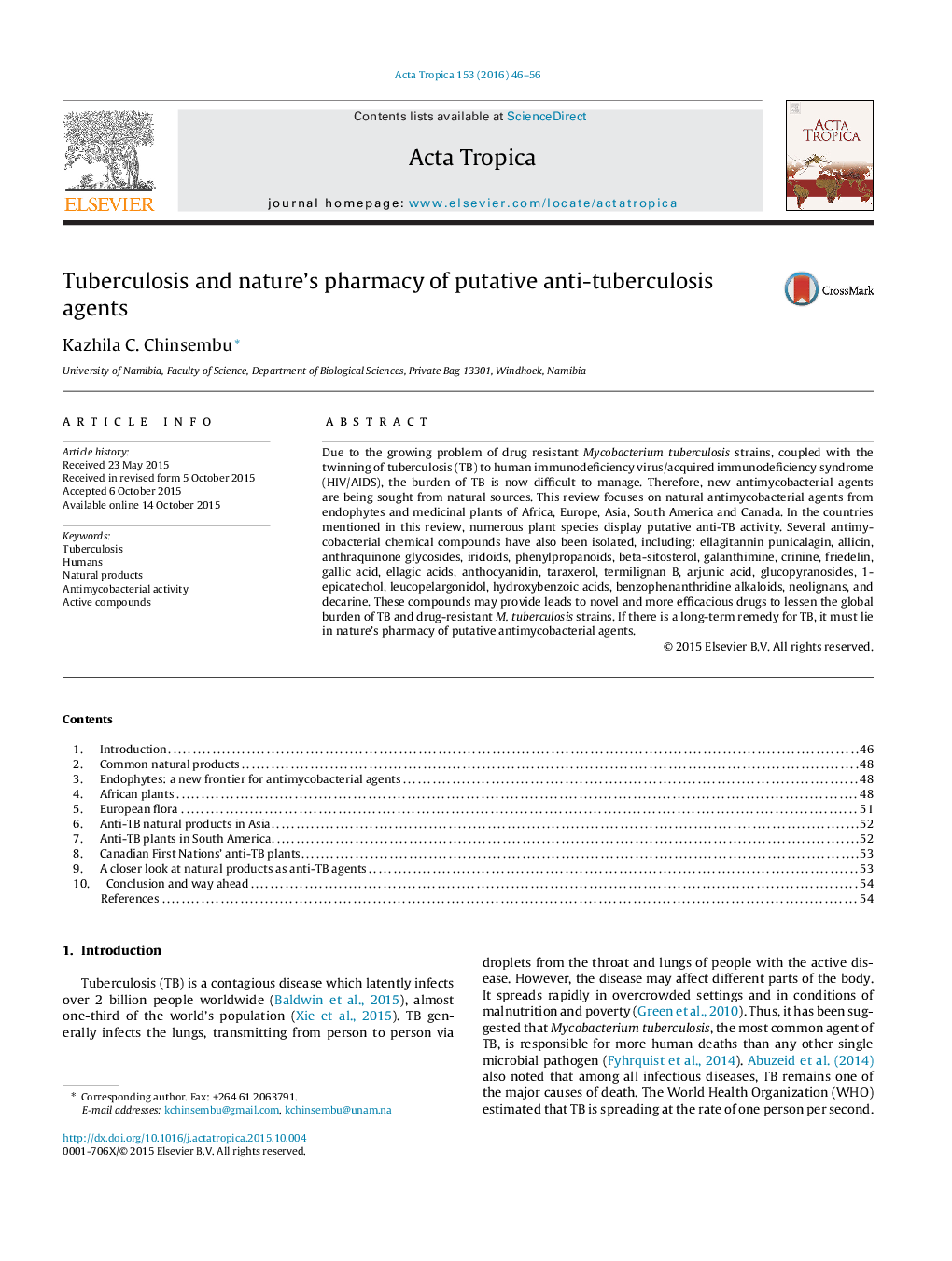| Article ID | Journal | Published Year | Pages | File Type |
|---|---|---|---|---|
| 3393781 | Acta Tropica | 2016 | 11 Pages |
•Natural products used to treat tuberculosis are reviewed.•At least 60 plant species are known to display anti-TB activity in Africa.•Anti-TB active compounds include 1-epicatechol, termilignan B and leucopelargonidol.•Others are β-sitosterol, friedelin, gallic acid, ellagic acids, decarine and anthocyanidin.
Due to the growing problem of drug resistant Mycobacterium tuberculosis strains, coupled with the twinning of tuberculosis (TB) to human immunodeficiency virus/acquired immunodeficiency syndrome (HIV/AIDS), the burden of TB is now difficult to manage. Therefore, new antimycobacterial agents are being sought from natural sources. This review focuses on natural antimycobacterial agents from endophytes and medicinal plants of Africa, Europe, Asia, South America and Canada. In the countries mentioned in this review, numerous plant species display putative anti-TB activity. Several antimycobacterial chemical compounds have also been isolated, including: ellagitannin punicalagin, allicin, anthraquinone glycosides, iridoids, phenylpropanoids, beta-sitosterol, galanthimine, crinine, friedelin, gallic acid, ellagic acids, anthocyanidin, taraxerol, termilignan B, arjunic acid, glucopyranosides, 1-epicatechol, leucopelargonidol, hydroxybenzoic acids, benzophenanthridine alkaloids, neolignans, and decarine. These compounds may provide leads to novel and more efficacious drugs to lessen the global burden of TB and drug-resistant M. tuberculosis strains. If there is a long-term remedy for TB, it must lie in nature’s pharmacy of putative antimycobacterial agents.
Graphical abstractSeveral antimycobacterial chemical compounds have been isolated plants: ellagitannin punicalagin, allicin, anthraquinone glycosides, iridoids, phenylpropanoids, beta-sitosterol, galanthimine, crinine, friedelin, gallic acid, ellagic acids, anthocyanidin, taraxerol, termilignan B, arjunic acid, glucopyranosides, 1-epicatechol, leucopelargonidol, hydroxybenzoic acids, benzophenanthridine alkaloids, neolignans, and decarine. These compounds may provide leads to novel and more efficacious drugs to lessen the global burden of TB and drug-resistant Mycobacterium tuberculosis strains.Figure optionsDownload full-size imageDownload as PowerPoint slide
